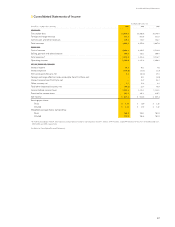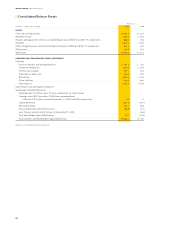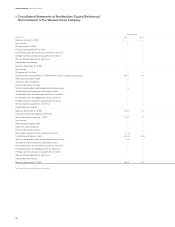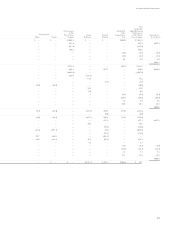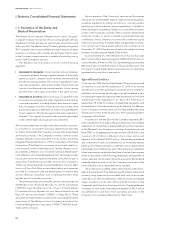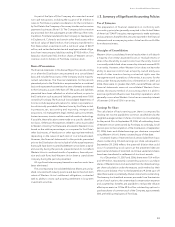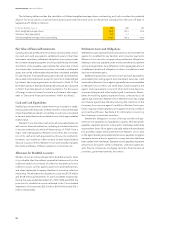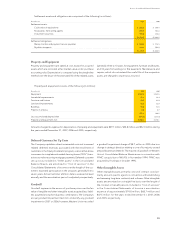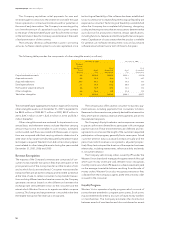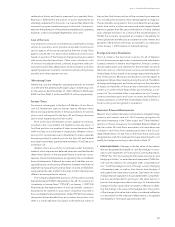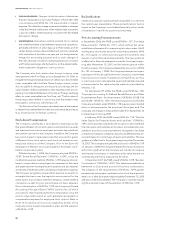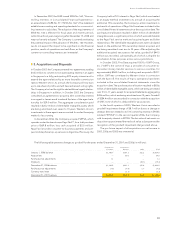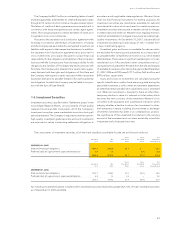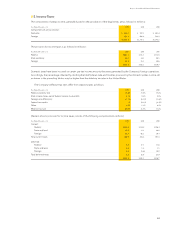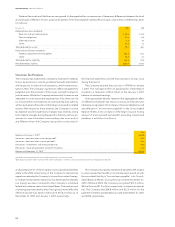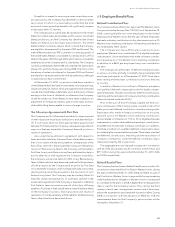Western Union 2007 Annual Report Download - page 58
Download and view the complete annual report
Please find page 58 of the 2007 Western Union annual report below. You can navigate through the pages in the report by either clicking on the pages listed below, or by using the keyword search tool below to find specific information within the annual report.
56
WESTERN UNION 2007 Annual Report
The Company capitalizes initial payments for new and
renewed agent contracts to the extent recoverable through
future operations, contractual minimums and/or penalties in
the case of early termination. The Company’s accounting policy
is to limit the amount of capitalized costs for a given contract
to the lesser of the estimated future cash fl ows from the contract
or the termination fees the Company would receive in the event
of early termination of the contract.
The Company develops software that is used in providing
services. Software development costs are capitalized once
technological feasibility of the software has been established.
Costs incurred prior to establishing technological feasibility are
expensed as incurred. Technological feasibility is established
when the Company has completed all planning, designing,
coding and testing activities that are necessary to determine that
a product can be produced to meet its design specifi cations,
including functions, features and technical performance require-
ments. Capitalization of costs ceases when the product is available
for general use. Software development costs and purchased
software are amortized over a term of three to fi ve years.
The following table provides the components of other intangible assets (in millions):
December 31, 2007 December 31, 2006
Weighted-
Average
Amortization Net of Net of
Period Initial Accumulated Initial Accumulated
(in years) Cost Amortization Cost Amortization
Capitalized contract costs 6.6 $274.0 $193.1 $242.3 $155.6
Acquired contracts 9.2 74.1 42.8 74.1 49.7
Acquired trademarks 24.7 44.7 41.0 40.7 38.8
Developed software 3.3 74.6 15.2 66.0 12.6
Purchased or acquired software 3.2 74.9 32.5 50.4 18.8
Other intangibles 6.8 28.6 9.5 25.6 12.2
Total other intangibles 7.5 $570.9 $334.1 $499.1 $287.7
The estimated future aggregate amortization expense for existing
other intangible assets as of December 31, 2007 is expected to
be $84.5 million in 2008, $57.7 million in 2009, $50.9 million in
2010, $39.7 million in 2011, $25.2 million in 2012 and $76.1
million thereafter.
Other intangible assets are reviewed for impairment on an
annual basis and whenever events indicate that their carrying
amount may not be recoverable. In such reviews, estimated
undiscounted cash fl ows associated with these assets or opera-
tions are compared with their carrying values to determine if a
write-down to fair value (normally measured by the present value
technique) is required. Western Union did not record any impair-
ment related to other intangible assets during the years ended
December 31, 2007, 2006 and 2005.
Revenue Recognition
The majority of the Company’s revenues are comprised of con-
sumer money transfer transaction fees that are based on the
principal amount of the money transfer and the locations from
and to which funds are transferred. Consumer money transfer
transaction fees are set by the Company and recorded as revenue
at the time of sale. In certain consumer money transfer transac-
tions involving different send and receive currencies, the Company
generates revenue based on the difference between the
exchange rate set by Western Union to the consumer and the
rate at which Western Union or its agents are able to acquire
currency. This foreign exchange revenue is recorded at the time
the related transaction fee revenue is recognized.
The Company also offers several consumer-to-business pay-
ment services, including payments from consumers to billers.
Revenues for these services are primarily derived from transaction
fees, which are recorded as revenue when payments are sent to
the intended recipients.
The Company’s Equity Accelerator service requires a consumer
to pay an upfront enrollment fee to participate in this mortgage
payment service. These enrollment fees are deferred and rec-
ognized into income over the length of the customer’s expected
participation in the program, generally fi ve to seven years. Actual
customer attrition data is assessed at least annually and the
period over which revenue is recognized is adjusted prospec-
tively. Many factors impact the duration of the expected customer
relationship, including interest rates, refi nance activity and trends
in consumer behavior.
The Company sells money orders issued by IPS under the
Western Union brand and manages the agent network through
which such money orders are sold. Western Union recognizes
monthly commissions from IPS based on a fi xed investment yield
on the average investable balance resulting from the sale of
money orders. Western Union also recognizes transaction fees
collected from the Company’s agents at the time a money order
is issued to the consumer.
Loyalty Program
Western Union operates a loyalty program which consists of
points that are awarded to program participants. Such points
may be redeemed for either a discount on future money transfers
or merchandise. The Company estimates the distribution
between awards of merchandise and discounts based on recent



